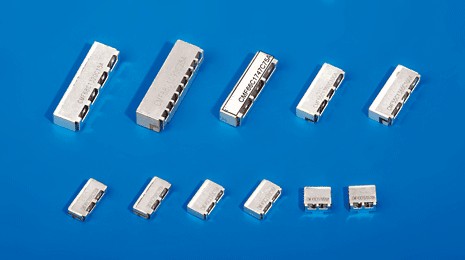Dielectric filters have come a long way since their invention in the 1950s. From early microwave applications to widespread use in modern cellular networks, dielectric filters play a vital role in enabling clear voice and high-speed data transmission.
The Origins of Dielectric Filter Technology
The first experiments with dielectric resonator filters took place in the 1950s at Bell Labs and other research institutions. Made of materials like ceramic and silica, these early filters allowed for sharper bandpass filtering compared to cavity resonator designs. However, it was not until the 1970s that dielectric filter technology began to mature. Superior quality factor (Q-factor) values were achieved through advances in dielectric material research and filter fabrication techniques. During this period, filters found uses in broadcast transmitters, radar systems and other military communication equipment where high selectivity was needed.
The 1980s saw the commercialization of Dielectric Filters. More compact designs leveraging higher Q dielectrics like sapphire enabled their widespread adoption in cellular base stations and mobile phones. This opened up new possibilities for mobile communication networks that required precise channel selectivity within small volume and weight constraints. By the 1990s, dielectric filter technology was pushed further through computer-aided design tools and multichannel multiplexing solutions.
Design and Working of Dielectric Filters
A dielectric filter essentially comprises a block of ceramic or other dielectric material mounted within a conductive enclosure like a rectangular waveguide or coaxial cavity. The material exhibits high dielectric permittivity while maintaining low loss tangents. Multiple resonance modes are established within the dielectric block through its size, shape and spacing from enclosure walls. Conductive coupling irises are added to couple these modes into a bandpass response.
Dielectric resonators support electromagnetic modes analogous to cavity resonators but offer advantages like higher Q-factors and smaller sizes. Q-factors up to 20,000 can be achieved by limiting dielectric losses. The resonance frequency depends on the dielectric constant and dimensions as per the relation:
f=c/2π√(εr)d
Where c is speed of light, εr is relative dielectric constant and d is resonator diameter.
By cascading multiple tuned resonators, complex multi-pole transfer functions can be realized within compact devices. Advanced designs leverage innovations in dielectric and antenna materials, surface treatment, miniaturized coupling irises and additive manufacturing for multiband/channel integration. Computer simulation tools aid complex simulations for optimizing insertion loss, bandwidth and harmonic suppression.
Applications of Dielectric Filters
Mobile Networks: Dielectric filters are integral to cellular base stations, enabling precise channel selection across 2G, 3G, 4G/LTE and upcoming 5G networks. Applications include duplexers, multiplexers and bandpass filters.
Broadcast Stations: Television and radio towers worldwide utilize dielectric bandpass and duplexer filters for transmission and reception across VHF/UHF bands.
Radar Systems: Defense radars leverage high precision dielectric filters for pulse shaping, signal separation and interference rejection. Space applications also increasingly adopt them.
Satellite Communication: Earth stations and satellite payloads rely on dielectric channel filters, duplexers and diplexers to ensure clear uplink/downlink in satellite networks.
Wireless Infrastructure: Wi-Fi access points, small cells and microwave backhaul systems employ dielectric technology for channel management across unlicensed bands below 6 GHz.
Future Outlook
Dielectric filter technology continues to evolve alongside emerging wireless standards. Multi-band/multi-mode designs address increasing spectrum segmentation. Miniaturization through additive manufacturing enables more integration. New materials like lithium niobate and high-temperature co-fired ceramics widen operating ranges.
The 6G roadmap points to wider bandwidths at mmWave frequencies over 30GHz by 2030. This will challenge current dielectric and packaging solutions. Advancing simulation tools based on electromagnetics, thermodynamics and material optimization is crucial. Multi-physics modeling can help optimize thermomechanical reliability alongside electrical performance for even smaller form factors.
From humble beginnings as basic resonating cavities, dielectric filters have become highly sophisticated RF components. They underpin clear voice and high-speed connectivity across a wide spectrum of applications. Advancements in materials science, electromagnetic modeling and nanofabrication open new prospects for the technology to support future terahertz and 6G opportunities. Dielectric filters thereby remain essential building blocks for continued progress in mobile communication and wireless networks globally.
*Note:
1. Source: Coherent Market Insights, Public sources, Desk research
2. We have leveraged AI tools to mine information and compile it




